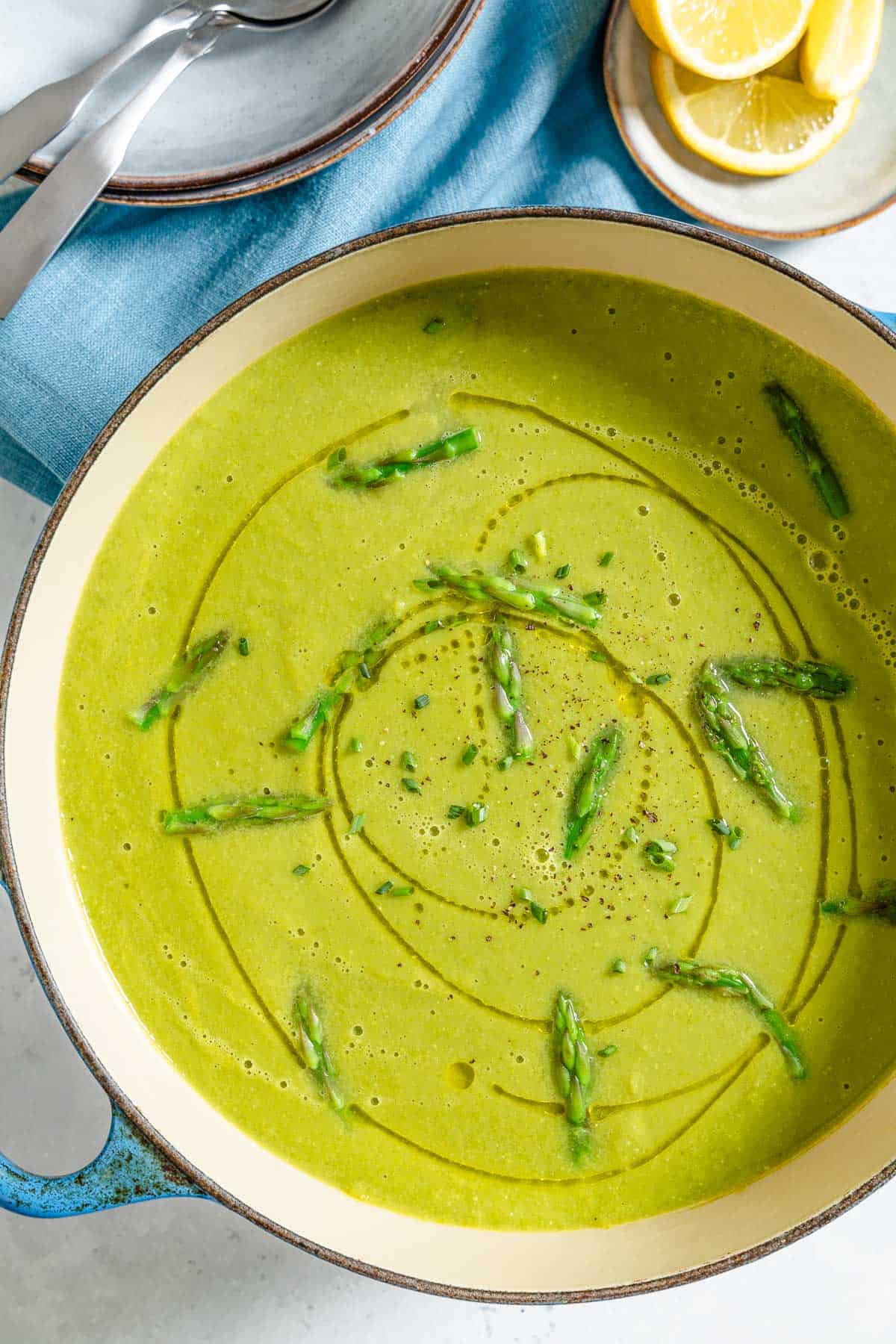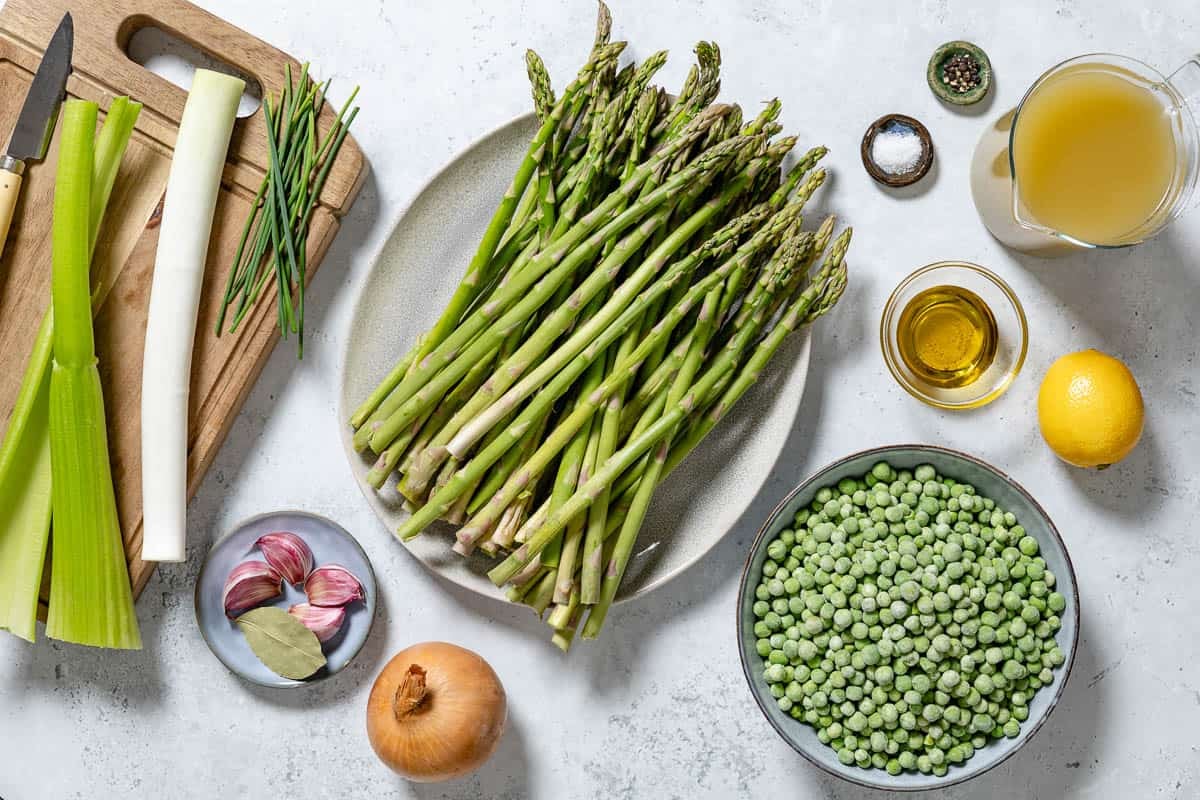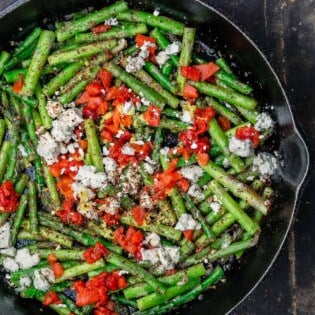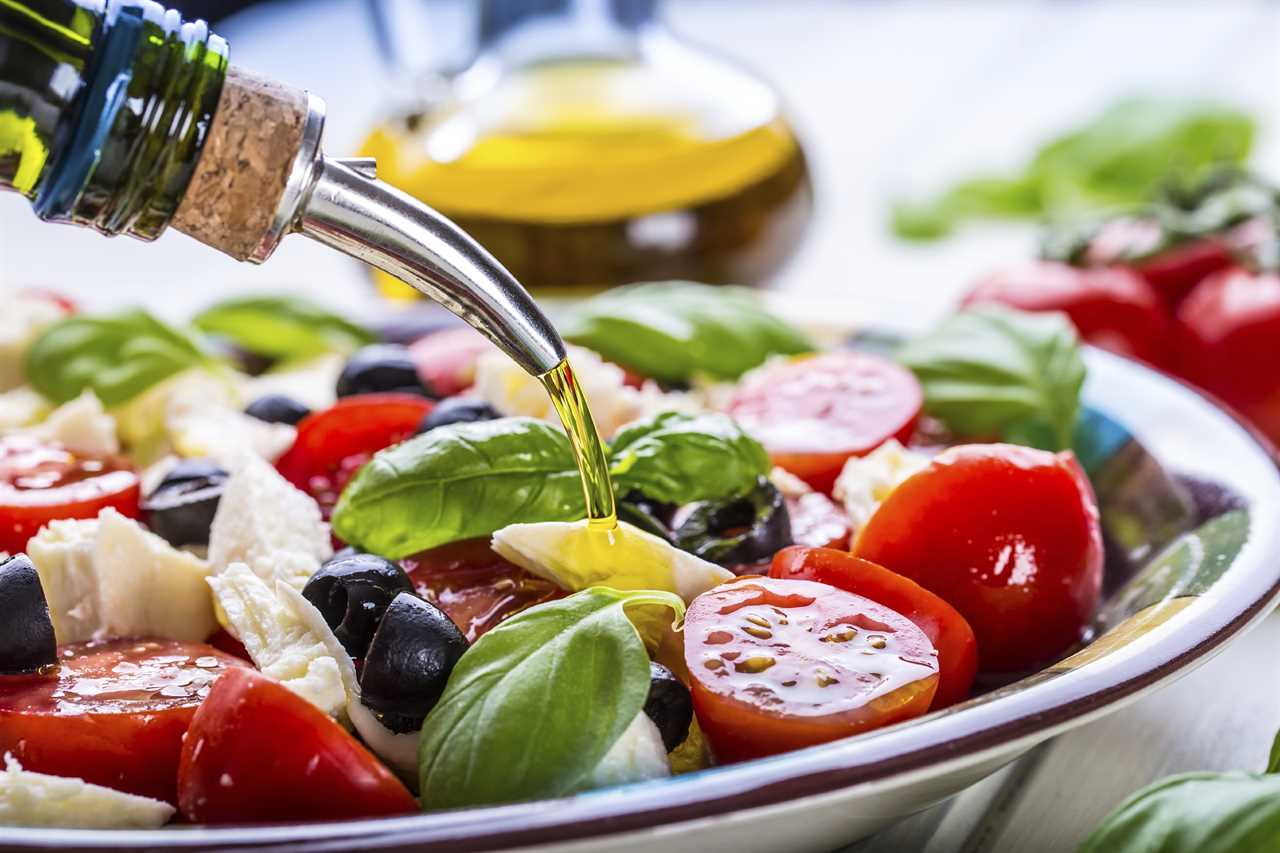
Sides and Small Plates
Light, velvety, and full of greens, this vegan asparagus soup with sweet peas and savory chives is the best way to welcome spring!

March may herald the start of spring, but I can still feel the lingering residue of winter calling me toward this rich and comforting soup. Asparagus, with its season running from early March into June, becomes its most flavorful just as the sun starts to shine again.
This elegant asparagus soup, with its medley of spring vegetables, is ideal for the slow transition from the slumber of winter to the busy and bright summer months. But I need little excuse to make a spring soup-I love to enjoy soups and stews until the temperature reaches a level that my Middle Eastern bones consider warm!
With this 30-minute recipe, I play on the sweet and savory nature of spring peas and asparagus with leeks, garlic, and onions. There’s no cream to dull the flavor, so the vegetables get their chance to shine.
It’s also very versatile: Serve as a first course for a dinner party—either seated or in small cups for sipping in between cocktails. Or alongside crusty bread, pita bread, or focaccia for a light lunch.

This vegan soup may be packed with veggies, but the dominant flavor is the buttery, sweet and earthy asparagus. You’ll also need:

This asparagus soup recipe is very simple yet elegant, so it’s great for a healthy lunch or dinner party first course. Here’s how you make it:




You can vary the flavor of this asparagus soup by adding chopped fresh mint and stirring through just before serving to give this soup an even fresher and lighter flavor profile.
To make the soup more filling, sprinkle on some feta as a garnish and/or add a poached egg on top-see our technique for poaching eggs in our Çılbır: Turkish Poached Eggs recipe.

The recipe below includes a simple garnish of a drizzle of olive oil and a sprinkle of finely chopped fresh chives. You can also add some croutons for a lovely crunch.
Alternatively, you can serve this soup with some crusty bread or Roasted Garlic and Rosemary Focaccia or Garlic Bread.

This asparagus soup recipe keeps well in both the refrigerator and freezer.

Sides and Small Plates

Salads

Sides and Small Plates

Salads
Browse All Mediterranean Recipes
Visit Our Shop
Bundle and Save!
Taste your way through the Mediterranean with our signature olive oil collection, including our famous Greek olive oils, Private Reserve and Early Harvest, plus our new Nocellara Italian olive oil and Hojiblanca Spanish olive oil.


The post Asparagus Soup appeared first on The Mediterranean Dish.
By: Mersedeh PrewerYes, it is possible to enjoy alcoholic beverages in moderation as part of the Mediterranean diet. Women should drink no more than 1 glass per day and men should have 2 glasses. Drinks that are suitable include beer, dry wines, and spirits made from natural ingredients, such as vodka, whiskey, brandy, and gin. High sugar cocktails and heavy spirits should be avoided. Drinking water and herbal teas daily can help keep your body hydrated, as well as reduce the desire to drink sugary drinks.
You can choose regular olive oil over extra virgin olive if you follow the Mediterranean diet. Regular olive oil can still be used, even though Extra Virgin Olive Oil (EVOO), is more desirable for its superior quality and nutritional benefits. However, it is still possible to use regular olive oil due to its mild flavor. Regular olive oil is great for everyday cooking, from stir-frying to roasting vegetables. This oil comes at a lower cost than EVOO. Others believe it might be better suited to high heat applications, such deep frying. It does not have the same nutrients and positive compounds as EVOO so make sure to get these benefits from other areas of your diet.
The Mediterranean diet is affordable and easy to prepare. Many of the staple foods can be found at local supermarkets or farmers' markets. Shopping for organic products, premium proteins or specialty items like extra virgin olive oil, can prove more costly. Plan your meals and budget accordingly. It is also a good idea to save money on food by using leftovers or bulk freezing foods such as fish and grains.
Yes, oatmeal may be consumed on the Mediterranean Diet. Oats can be whole grains that provide a good source or dietary fiber and minerals, such as iron and magene. They can be served with blueberries as well as nuts, seeds and savory dishes like eggs or cheese. Oatmeal also has many benefits and can make a nutritious breakfast. Oatmeal can be added to smoothies, used as a topping in protein bars or simply eaten plain with almond butter and various toppings like cinnamon, gojiberries and chia seed. Many countries in the Mediterranean basin are awash with oats, making them compatible with this diet.
A Mediterranean diet focuses on healthy fats and protein and lots of fresh fruit, vegetables, whole grains. A Mediterranean diet should have seven to 10 portions of fruits and vegetables each day and at least two to four 3-ounces of lean meats such as fish and chicken. In moderate quantities, nuts and olive oil are good sources of healthy fats. You should aim to consume at least three servings each day of whole grains such as quinoa and barley or oats in order to maintain a healthy diet.
Limiting foods that can be harmful when consumed regularly is crucial. This includes all processed foods, sugar, unhealthy oils, starches, sweetened drinks like soda or juices, and red meats that contain saturated fats or nitrates. Avoiding dairy is a good idea. If you do want to include dairy, it should be done sparingly. Avoid eating fish more than three times per week due to potential mercury contamination. This can affect its nutritional value and cause it to be less nutritious if it is not planned for.
It can be helpful to plan your meals to ensure that you get the best out of your Mediterranean diet. Pay particular attention to the ingredients in selected dishes. This will help you to reap the health and heart benefits associated with the Mediterranean diet.
The Mediterranean diet offers a variety of delicious and nutritious food options that can make it enjoyable. You can eat high-quality protein such as wild-caught and grass-fed fish, organic eggs, and meat, in order to have the best meals. You should also include heart-healthy fats such as nuts, olives and avocados, extra virgin oil, coconut oil, and extra virgin olive oil. In your meals, make sure you include plenty of fresh, frozen, and whole grain options such as quinoas, barley, and oatmeal. Finally, limit unhealthy fats, added sugar, processed foods, starches, red meat, and processed meats.
Yes, you can adapt the Mediterranean Diet to be gluten-free. It is possible to incorporate gluten-free grains into your meals, instead of whole-grain carbohydrates such as barley or wheat. This diet should include a lot of fruits such as melon, pears, fresh veggies, legumes and nuts. Individuals who are allergic to dairy and milk may find it beneficial to choose lactose-free options for protein. Other ideas include making porridge for breakfast instead of oatmeal, baking salmon with potatoes, bean soup, or roasting vegetables with herbs.
The Mediterranean Diet is an eating pattern that emphasizes healthy fats, whole grains, legumes, and fresh fruits and vegetables. There are many health benefits associated with it, including improved blood lipids and glucose control, reduced risk of certain types and cancers, better cardiac health, improved cognitive function, weight management, and better overall health. There are some simple tips that can make it easier for you to follow a Mediterranean-style diet. Firstly, start swapping high-calorie snacks such as chips for nutrient-dense vegetables, even if you consume them as appetizers before meals or during exchanges between traditional courses. Learn how spices and other vegetable-derived ingredients can be used to enhance your diet. To increase your satisfaction after meals, you can incorporate grains, legumes, high-fiber foods, and other high-fiber ingredients. Following these steps will help one enjoy their food while pursuing a healthier lifestyle and potentially additional health benefits such as a longer lifespan and higher quality of life.
 |
[TAG46]Healthline ranked the Mediterranean Diet number 1 for the following reasons: Numerous studies associate the Mediterranean diet with a reduced risk of heart |
 |
[TAG47]The Mediterranean diet originates in the food cultures of ancient civilizations which developed around the Mediterranean Basin and is based on the regular |
 |
[TAG48]Psychology Today reports: Eating more green, leafy vegetables and less red meat were associated with improved cognitive functioning in a recent study of older |
 |
[TAG49]This review of five human studies on the Mediterranean diet examines its effects on weight loss, various diseases, and the risk of death. |
 |
[TAG50]CNBC reports that Joan Salge Blake, Boston University’s clinical professor of nutrition says: “‘Poor protein [intake] can contribute to fatigue, and that’s the |
 |
[TAG51]The Mediterranean diet has been linked to a number of health benefits, including reduced mortality risk and lower incidence of cardiovascular disease. |
 |
[TAG52]According to Olive Oil Times: The authors of the meta-study, published in Current Obesity Reports, noted that hypertension, type 2 diabetes mellitus, several |
 |
[TAG53]The Mediterranean diet, with its emphasis on fresh vegetables and fruit, whole grains, legumes, olive oil and fish, provides an array of health benefits, |
 |
[TAG54]The study described in The Epoch Times found: In the conclusions of this study, the authors prefer the Mediterranean diet over the Keto diet because the key to |
 |
[TAG55]The Mediterranean diet is a heart-healthy eating plan that emphasizes healthy fats, whole grains, fruits, vegetables, beans, nuts and seeds. |
 |
[TAG56]Abstract. Consuming a Mediterranean diet rich in minimally processed plant foods has been associated with a reduced risk of developing multiple chronic diseases |
 |
[TAG57]It’s an easy (and delicious!) change that can turn your diet into a disease-fighting tool. |
 |
[TAG58]There are many misconceptions about the Mediterranean diet. Learn what it really means and how it can help you live a healthier, longer life. |
 |
[TAG59]A review article published in the journal Experimental Gerontology describes the utility of Mediterranean diet (MedDiet) in the prevention and management of |
